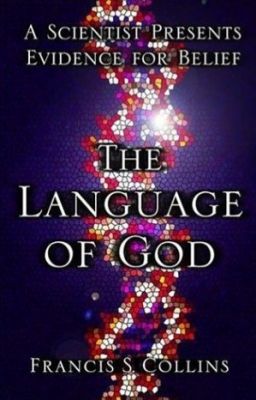Those who would give up essential Liberty, to purchase a little temporary Safety, deserve neither Liberty nor Safety.
—Benjamin Franklin
«— A Scientist Who Believes
—» Where are the Floodbanks?
July 30, 2006
Protected: Conversation I Wish For
Link to this post
What people are saying about this article: Enter your password to view comments.
«— Lebanon, in Facts and in Pictures
—» Conversation I Wish For
A Scientist Who Believes
Link to this post
Here’s one for readers interested in my occasional jabs at creationism: The Language of God by Dr. Francis Collins, former head of the Human Genome project, among other accomplishments. He is one of the believing scientists I’ve mentioned in my arguments for the compatibility of science and faith, a demographic which constitutes 40% of scientists in general, according to some statistics.
Richard Ostling mentions the book in an Associated Press article about Dr. Collins. The Language of God, writes Ostling, has two objectives:
He asks scientific skeptics to investigate God with the same open-minded zeal they apply to the natural world, saying that there’s no incompatibility between belief and scientific rigor.
He tells fellow evangelicals that opposition to evolution — whether based in the biblical literalism of creationists or “intelligent design” arguments — undermines the credibility of faith. He finds the first line of thought “fundamentally flawed” and says the second builds upon gaps in evidence that scientists are likely to fill in.
Someday, I will be able again to devote time to personal reading — that is, reading that is not a Training Aid Book or a Ship’s Service Manual. When I do, this will be waiting on my list. As will books on the misnamed movement “intelligent design.” (Seriously, we need to figure out how to get that phrase back.)
Hat tip: GetReligion: July 30, 2006

What people are saying about this article: Comments Off on A Scientist Who Believes
«— Critical of Criticism
—» A Scientist Who Believes
July 21, 2006
Lebanon, in Facts and in Pictures
Link to this post
I have no comment except to point out this report: Bonovox – Journal – Lebanon, in Facts and in Pictures. Warning: That page links to a site which displays graphic images of war. Not for the faint of heart.
Tuesday 18, at 13:22pm, the Israeli Army bombed – by land and air – the old Orthodox Church of St. George in Rashaiya Fakhar (Hasbaiya, Southern Lebanon) as well as its meeting house, the parish priest house and the Orthodox School with 15 bombs, some of them are phosphoric. It destroyed the southern wall of the church and caused a big fire in it. At that time, many parishioners were hiding and praying with their parish priest asking God’s protection. Ten were burnt and wounded. I have to mention that there was a white flag flying on top of the church.

«— Church of Nigeria: The Episcopal Church compared to “a cancerous lump”
—» Lebanon, in Facts and in Pictures
July 18, 2006
Critical of Criticism
Link to this post
Journeyman James on higher criticism and the St. Stephen’s Course (a correspondence course administered by the Antiochian Archdiocese primarily for late vocations):
Apparently we’ve had folks in the parish want to quit the course altogether because whoever is running St. Stephen’s insists on focussing on that laborious, unsalvific, heterodox nonsense.
I met a certain person at the St. Tikhon’s Pilgrimage, who asked me what seminary I was thinking of attending. Replying that I was looking at probably attending St. Vladimir’s, he replied, “Oh, that’s fine, if you like higher criticism and heresy in the classroom.” So I suppose James is not alone in his distrust of criticism and those in the Church who participate in it.
Higher criticism is simply a tool for better understanding a text — any text. God-inspired Scripture is still a collection of texts written by men — and possibly women — and liable of the same analysis as any other text. Many people make at least four mistakes — especially those coming from an evangelical background:
- Critical analysis of a text determines its meaning. In fact: It only assists us in properly understanding the literal meaning of a text. However, the Church believes in at least three other senses of meaning besides the literal: the anagogical, the allegorical, and the moral. These derive from the literal, but we learn them primarily through the writings of the fathers.
- Criticism deprives the text of its God-inspired character. In fact: Learning how a text was written and understood in its original context has no effect whatsoever on whether or not it was inspired of God. Learning that Saint So-and-so didn’t actually write the Epistle of So-and-so to the Such-and-suchians does not mean it is suddenly no longer God-inspired. The Holy Spirit through the living Tradition of the Church still determines the meaning of the text.
- All critical theories and hypotheses stand on equal footing. In fact: This is definitely not the case. Some critical theories have withstood the test of time, such as that there was a stable, possibly written, source that both Matthew and Luke used for the material that is not included in Mark. Others will fade like the wind.
- The Jesus Seminar is a bunch of crap. In fact: OK. That’s not a mistake; they really are all nut-cases. Especially the supposedly conservative ones. They’re fools. But the Jesus Seminar is a serious abuse of the tool of higher criticism. The point here is that tools can be abused in ways which do not invalidate the tool. Crowbars can be used for murder or opening man-hole covers.
Now if only I can figure out whether this person meant some other “heresy” besides criticism in the classroom.

«— 500 WMDs and Counting
—» Critical of Criticism
July 9, 2006
Church of Nigeria: The Episcopal Church compared to “a cancerous lump”
Link to this post
[Archbishop of Canterbury Rowan Williams] boldly puts the blame at the door of the Episcopal Church where there had been no agreement or any kind of consensus — whether in the Episcopal Church itself or in the global Communion — before the ordination of Gene Robinson was undertaken. It is noteworthy also that he remarks that “the recent resolutions of the General Convention have not produced a complete response to the challenges of the Windsor Report…” One wonders if such blatant disregard should not be reprimanded.
The Archbishop says we “have tried to be a family of Churches willing to learn from each other across cultural divides, not assuming that European (or American or African) wisdom is what settles everything, opening up the lives of Christians here to the realities of Christian experience everywhere”. [sic] He then goes on to suggest that the genuine concerns expressed about orthodoxy and the need to contend for the faith once entrusted to the saints, have made the debate harder, and “reinforced the lines of division and led to enormous amounts of energy going into ‘political’ struggle (!) with and between churches in different parts of the world.” The idea that these genuine concerns have degenerated to the “politicization of a theological dispute” instead of “reasoned debate” is very sadly patronizing. One would have expected that those who had embarked on this religious misadventure would be encouraged to judge their actions against our well-established historic tradition.
A cancerous lump in the body should be excised if it has defied every known cure. To attempt to condition the whole body to accommodate it will lead to the avoidable death of the patient.
Read more: Church of Nigeria: RE: The Challenge and Hope of Being Anglican Today — A response from the House of Bishops of the Church of Nigeria
Hat tip: Get Religion

«— Vigil
—» Church of Nigeria: The Episcopal Church compared to “a cancerous lump”
July 6, 2006
500 WMDs and Counting
Link to this post
Over 500 — the exact number is still classified — weapons of mass destruction have been found in Iraq, and the search continues.
“These are chemical weapons as defined under the Chemical Weapons Convention, and yes … they do constitute weapons of mass destruction,” Army Col. John Chu told the House Armed Services Committee.
The Chemical Weapons Convention is an arms control agreement which outlaws the production, stockpiling and use of chemical weapons. It was signed in 1993 and entered into force in 1997.
The munitions found contain sarin and mustard gases, Army Lt. Gen. Michael D. Maples, director of the Defense Intelligence Agency, said. Sarin attacks the neurological system and is potentially lethal.
“Mustard is a blister agent (that) actually produces burning of any area (where) an individual may come in contact with the agent,” he said. It also is potentially fatal if it gets into a person’s lungs.
The munitions addressed in the report were produced in the 1980s, Maples said. Badly corroded, they could not currently be used as originally intended, Chu added.
While that’s reassuring, the agent remaining in the weapons would be very valuable to terrorists and insurgents, Maples said. “We’re talking chemical agents here that could be packaged in a different format and have a great effect,” he said, referencing the sarin-gas attack on a Japanese subway in the mid-1990s.
According to the press release from Armed Forces Press Service, it is believed that the deposed Iraqi regime had poor maintenance records, which have made it difficult to locate the chemical weapons remaining. Lt. Gen. Chu indicated that he did not believe all the chemical weapons had been found.
Read more: Munitions Found in Iraq Meet WMD Criteria

Copyright © 2002–2011 Kevin Robert (Basil) Fritts, all rights reserved.

